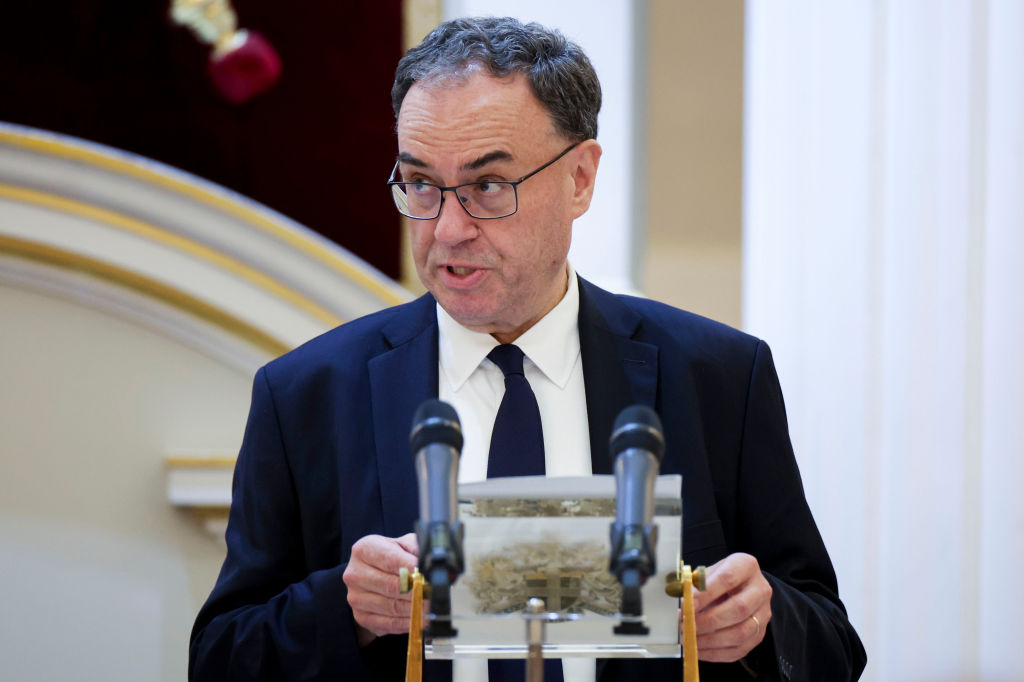Unemployment hits highest level in almost five years as jobs market cools further
Unemployment increased to 5.1% in the three months to October as pay growth continues to slow, according to new data from the Office for National Statistics.


Unemployment has crept up to its highest level in almost five years as the jobs market continues to stutter and pay growth slows.
The jobless rate increased to 5.1% in the three months to October, according to new official figures from the Office for National Statistics (ONS).
The latest reading is up from 0.1 percentage points from the unemployment rate in the three months to November, which came in at 5%.
MoneyWeek
Subscribe to MoneyWeek today and get your first six magazine issues absolutely FREE

Sign up to Money Morning
Don't miss the latest investment and personal finances news, market analysis, plus money-saving tips with our free twice-daily newsletter
Don't miss the latest investment and personal finances news, market analysis, plus money-saving tips with our free twice-daily newsletter
The last time unemployment was this high was in January 2021 – a time when the country was still in the midst of the Covid crisis.
The rise in joblessness also means there were 2.5 unemployed people per job vacancy in the three months to October, up from 2.3 people per vacancy in the previous quarter, and 1.8 in the previous year.
The employment rate (measured slightly differently from the unemployment rate) in the UK also fell in the three months to October, going down to 74.9%, a small drop from 75% in the three months to September.
Meanwhile, the ONS’s data shows the number of payrolled employees fell in November, going down by 38,000. This is more than the 22,000 fall that occurred in October.
Liz McKeown, ONS director of economic statistics, said the latest data shows “the overall picture continues to be of a weakening labour market”.
She added: “The number of employees on payroll has fallen again, reflecting subdued hiring activity, while firms told us there were fewer jobs in the latest period.”
Alice Haine, personal finance analyst at Bestinvest by Evelyn Partners, said the labour market has “entered a period of gridlock”.
She argues this is incentivising workers to stay with their current employers instead of switching roles, which has “become a high-risk strategy for workers already struggling with elevated living costs”.
She added: “For many, it may feel safer to stick with an existing job than face all the uncertainties that come with moving – from probation periods and pension resets to a greater chance of redundancy or the loss of flexibility afforded by an employer who understands their value.”
Wage growth continues to slow
Employee’s average regular earnings grew by 4.6% in the three months to October, the ONS says, down slightly from 4.7% in the three months to September. The new data brings the average regular weekly earnings for those working in the UK to £687, rising to £739 for total pay.
When including bonuses, wage growth was slightly higher (4.7%), but there was still a month-on-month 0.1 percentage point fall.
Even when excluding bonuses, wages continue to grow faster than inflation, which has been stubbornly high for much of 2025. It means employees are getting real-terms pay rises of around 0.5% in the three months to October on their regular earnings, and of 0.6% on total earnings.
The public sector continued to lead pay growth in the three months to October, as average regular earnings grew by 7.6% for those employed by the government. Private sector workers averaged regular pay growth of 3.9%.
This disparity is partially explained by some public sector pay rises being paid earlier in 2025 than in 2024, causing a base effect.
Haine at BestInvest said: “Slowing wage growth is a concern for workers, who are also grappling with the Budget decision to extend the freeze on income tax thresholds by another three years to 2031.
“This prolongs the fiscal drag misery for workers up and down the country, who will see their take-home pay erode in real terms despite wages appearing to rise – a dynamic that may prompt a surge in higher wage demands.”
Haine added that this also presents a challenge for employers who need to either “absorb rising costs to meet wage demands, delivering a hit to their bottom line, or minimise pay rises and risk losing key talent”.
She said: “Many businesses have already scaled back hiring plans for 2026, signalling tougher conditions ahead for jobseekers who face the prospect of fewer opportunities and increased competition for roles.”
Weakening jobs market could lead to falling interest rates
This month’s labour market data comes just a few days before the Bank of England (BoE) meets to decide whether or not they will cut interest rates.
Most analysts currently expect the BoE’s Monetary Policy Committee (MPC) to cut rates in their next meeting on Thursday (18 December), with markets pricing in a 90% chance of this happening.
While a weakening jobs market is not a good economic indicator, the silver lining is that a higher unemployment rate tends to be a disinflationary force.
This could mean the MPC is more likely to vote to cut interest rates, as the economic backdrop means inflation is expected to continue falling, especially considering the UK economy shrank in October.
In its most recent meeting on 6 November the MPC was split down the middle whether to cut or hold, leaving BoE governor Andrew Bailey with the deciding vote to hold rates at 4%.
Richard Carter, head of fixed interest research at Quilter Cheviot, says the latest set of data means a cut is far more likely.
He said: “With the economy shrinking – largely thanks to the recent Budget and its impact on consumer confidence, spending and business planning – and the outlook for growth rather bleak, a cut is seeming more likely this time around.
“The Bank is still walking a tightrope. While it will want to spur some growth, it won’t want to inadvertently add to inflationary pressures. Nonetheless, should inflation come in lower as expected tomorrow, a rate cut could well be ticked off everyone’s Christmas list.”
Get the latest financial news, insights and expert analysis from our award-winning MoneyWeek team, to help you understand what really matters when it comes to your finances.
Daniel is a financial journalist at MoneyWeek, writing about personal finance, economics, property, politics, and investing.
He is passionate about translating political news and economic data into simple English, and explaining what it means for your wallet.
Daniel joined MoneyWeek in January 2025. He previously worked at The Economist in their Audience team and read history at Emmanuel College, Cambridge, specialising in the history of political thought.
In his free time, he likes reading, walking around Hampstead Heath, and cooking overambitious meals.
-
 Investors will reap long-term rewards from UK equities
Investors will reap long-term rewards from UK equitiesOpinion Nick Train, portfolio manager, Finsbury Growth & Income Trust, highlights three UK equities where he’d put his money
-
 The graphene revolution is progressing slowly but surely
The graphene revolution is progressing slowly but surelyEnthusiasts thought the discovery that graphene, a form of carbon, could be extracted from graphite would change the world. They might've been early, not wrong.
-
 Why investors can no longer trust traditional statistical indicators
Why investors can no longer trust traditional statistical indicatorsOpinion The statistical indicators and data investors have relied on for decades are no longer fit for purpose. It's time to move on, says Helen Thomas
-
 Is the Office for National Statistics fit for purpose?
Is the Office for National Statistics fit for purpose?Britain’s statistics authority, the Office for National Statistics, is increasingly unfit for purpose. Why, and what can be done?
-
 UK inflation forecast: where are prices heading next?
UK inflation forecast: where are prices heading next?UK inflation fell sharply in November. Will this drop be sustained, or should consumers brace for higher inflation readings in 2026?
-
 Uncertainty ahead of the Budget causes house price growth to stall, says Rightmove
Uncertainty ahead of the Budget causes house price growth to stall, says RightmoveProperty website Rightmove says asking prices increased by just 0.3% in October, well below the 1.3% average for the month
-
 ONS: UK economy unexpectedly shrinks by 0.1% in October – what does it mean for interest rates?
ONS: UK economy unexpectedly shrinks by 0.1% in October – what does it mean for interest rates?The latest GDP figures strengthen the case for a base rate cut in December, experts suggest
-
 UK GDP: UK economy stagnates
UK GDP: UK economy stagnatesLatest GDP data shows the UK economy showed no growth in the third quarter of the year due to rising interest rates. But have we side-stepped a recession?
-
 ONS: UK economy recovered from pandemic faster than previously thought
ONS: UK economy recovered from pandemic faster than previously thoughtRevisions from the ONS showed the UK economy has grown since the pandemic, while the latest data showed GDP grew in the second quarter of 2023.
-
 UK economy avoids stagnation with surprise growth
UK economy avoids stagnation with surprise growthGross domestic product increased by 0.2% in the second quarter and by 0.5% in June
